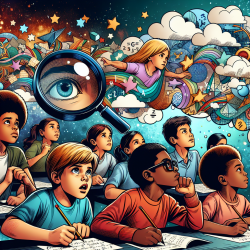Introduction
In the realm of education, language is not merely a tool for communication but a powerful conveyor of culture and identity. A recent study titled "Language and Identity in an Indigenous Teacher Education Program" sheds light on the profound impact of learning Indigenous languages on cultural identity and wellness. This blog aims to explore the study's findings and their implications for educators, particularly those involved in language revitalization efforts.
The Study: A Deep Dive into Language and Identity
The study focuses on the Inuit Bachelor of Education (IBED) program, a collaborative initiative between the Nunatsiavut Government and Memorial University of Newfoundland. This program includes an Inuktitut language training component aimed at rejuvenating the language and strengthening cultural identity among Inuit students. Through narrative methods, the study captures the personal experiences of five Inuit education students as they learn Inuktitut, revealing the emotional and psychological transformations they undergo.
Key Findings
- Enhanced Self-Identity: Participants reported a deeper sense of self and pride in their Inuit identity as they learned Inuktitut. The language learning process was likened to finding a missing puzzle piece, making them feel more complete.
- Increased Connectedness: Learning Inuktitut fostered a stronger connection to their community, elders, and cultural heritage. Participants expressed that the language bridged the gap between generations and reinforced their sense of belonging.
- Overcoming Alienation: Initially, participants felt alienated due to their limited language skills. However, as they progressed, they experienced a reduction in feelings of shame and embarrassment, leading to improved self-esteem and confidence.
Implications for Educators
For practitioners in the field of education, these findings underscore the importance of integrating Indigenous language learning into curricula. By doing so, educators can facilitate the development of a strong cultural identity among students, which is linked to improved wellness and academic outcomes. Here are some actionable steps educators can take:
- Incorporate Indigenous languages into classroom activities and projects.
- Invite community elders and language speakers to share their knowledge and stories with students.
- Create a supportive environment that encourages language practice and cultural exploration.
Encouraging Further Research
The study's preliminary findings highlight the transformative power of language learning on cultural identity. However, further research is needed to explore the long-term impacts and to identify best practices for language revitalization in educational settings. Educators are encouraged to engage in collaborative research efforts and to share their experiences and insights with the broader community.
Conclusion
Language is a key aspect of identity and culture, and its revitalization holds the potential to enhance the well-being of Indigenous communities. By embracing language learning as a health promotion strategy, educators can play a pivotal role in nurturing positive self-identity and cultural continuity among students.
To read the original research paper, please follow this link: Language and identity in an Indigenous teacher education program.










